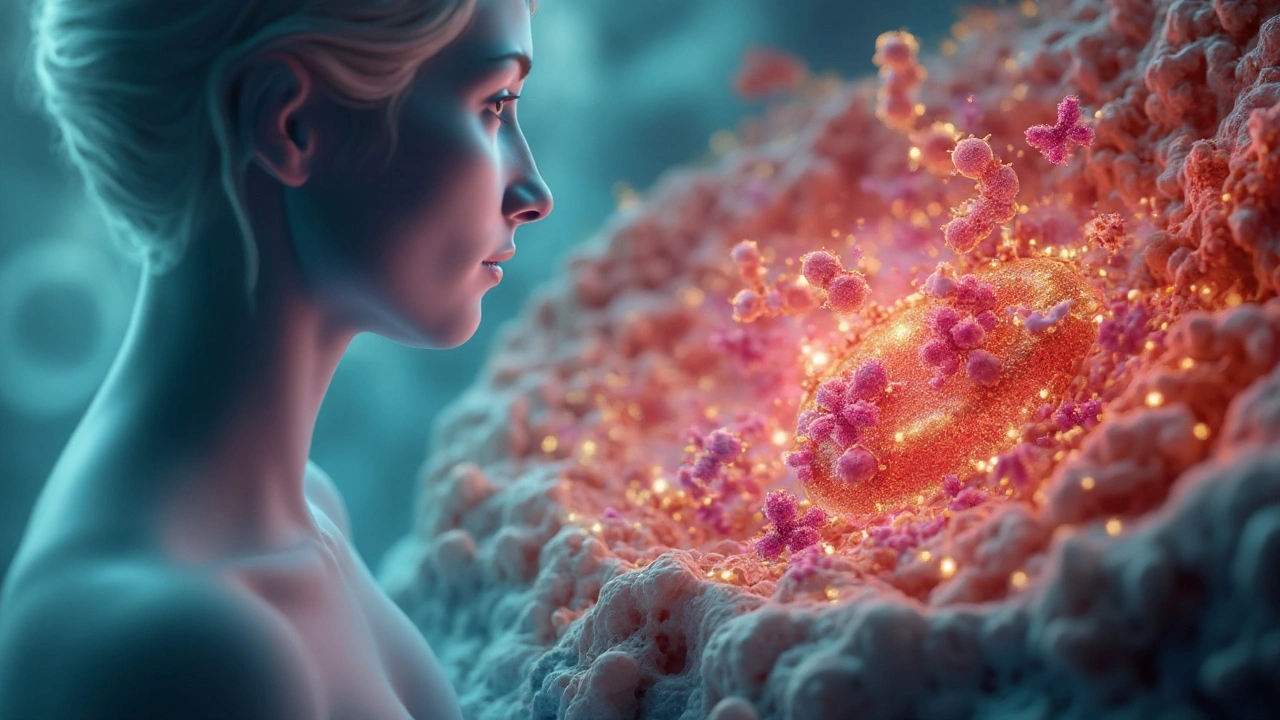Aromatase Inhibitors – Quick Guide to Uses and Side Effects
If you’ve heard doctors mention “aromatase inhibitor” and wondered what it means, you’re not alone. These drugs are a staple in breast cancer treatment for post‑menopausal women and are also used in other hormone‑related conditions. Below you’ll find the basics—how they lower estrogen, why that matters, and what you might feel while taking them.
How Aromatase Inhibitors Lower Estrogen
Aromatase is an enzyme that turns testosterone into estrogen. In post‑menopausal women, most estrogen comes from this conversion, not from the ovaries. Aromatase inhibitors (AIs) block the enzyme, so the body makes far less estrogen. Less estrogen means slower growth of hormone‑sensitive breast cancers, which rely on the hormone to multiply.
The three most common AIs are anastrozole, letrozole, and exemestane. They differ in how strongly they bind to aromatase and how they are cleared from the body, but the end result is the same—dramatically reduced estrogen levels. Doctors usually prescribe them after surgery, radiation, or chemotherapy to keep any remaining cancer cells in check.
Common Side Effects and Safety Tips
Because estrogen does more than just affect breast tissue, dropping its levels can cause noticeable side effects. The most frequent complaints are joint pain, hot flashes, and fatigue. Some people also experience bone thinning, so doctors often check bone density and may suggest calcium or vitamin D supplements.
Stomach upset, nausea, and mild swelling are reported too, but they’re usually manageable. If you notice severe joint pain or sudden loss of bone strength, call your doctor—sometimes a dose adjustment or a switch to another AI helps.
It’s important to keep regular follow‑up appointments. Blood tests will monitor cholesterol and liver function, while imaging can track any changes in tumor size. Staying active, eating a balanced diet, and avoiding smoking can also reduce the risk of side effects.
In rare cases, AIs can cause heart problems or severe allergic reactions. If you feel chest pain, severe shortness of breath, or a rash that spreads quickly, seek medical help right away.
Remember, AIs are not the same as tamoxifen, another hormone drug that works by blocking estrogen receptors instead of lowering estrogen production. Your doctor will choose the right medication based on your cancer type, stage, and overall health.
Bottom line: aromatase inhibitors are powerful tools that cut estrogen production, slowing hormone‑driven cancers. They come with a set of side effects that most people can manage with the right lifestyle choices and regular medical monitoring. Talk openly with your healthcare team about any new symptoms—early tweaks can keep you on track and feeling better while you fight cancer.
Exemestane Explained: How This Aromatase Inhibitor Works at the Molecular Level
A clear, evidence-backed breakdown of how exemestane shuts down estrogen production, who it helps, key trial data, dosing nuances, interactions, and side-effect management.

